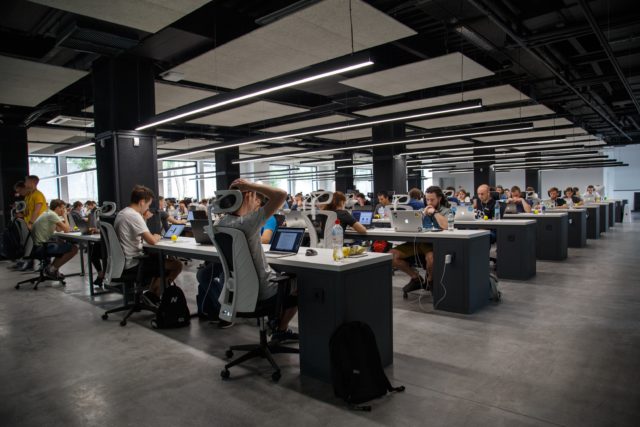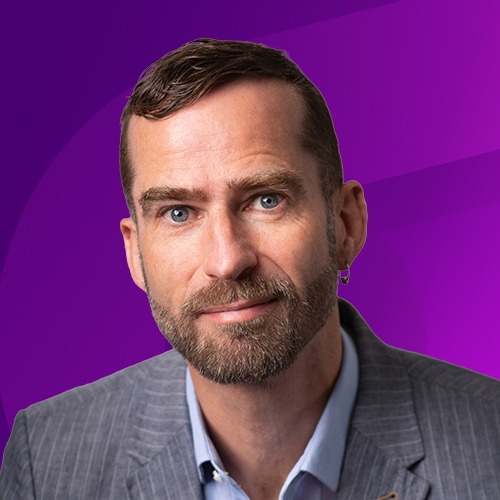From public health outbreaks to environmental threats, crisis management teams are no longer navigating one-off, time limited events but long-term competing crises, rapidly changing technology, and new organizational needs. Instead of relying on traditional approaches to critical events, today’s crisis managers need to consider adopting third generation SaaS technology to automate key tasks, streamline communications, and reduce crisis fatigue.
Knowing that simultaneous disruptions and rapid advancement are becoming the new norm, let’s take a look some of the recent changes to organizational environments to see where crisis managers are facing new norms and how they can best adapt and respond.
Escalating Events: The New Norm for Crisis Management

An estimated $36 billion across 1985-1994, the global expected costs of natural disasters is now upwards of $184 billion per year. Further increasing in their impact, the number of people affected by these experiences has more than doubled in the last three decades.
Beyond environmental threats, reputational crises, physical security threats, market volatility, and cybersecurity threats are other major escalating concerns. With the added strain of global trade, transportation, and public health fallout from COVID-19, today’s increased rate of critical events hasn’t matched the time spent adapting to managing multiple crises. Instead of relying on traditional crisis management processes, crisis response teams need to pair past practice with technology to move to active threat monitoring, integrated communication systems, and automated response plans to free up much needed bandwidth and time.
Rapid Global Development: New World, More Vulnerabilities
Out of line with the 21st century’s rapid-fire digital transformation, many crisis management teams have watched the evolution of complex ICT systems without taking advantage of the solutions. Driving economic development and productivity over the past 20 years, the opportunities and challenges resulting from our increasingly digital world are two-fold: on one hand, organizations can leverage technology to automate tasks and free up much needed time for crisis management teams; on the other, the rate of advancement leaves late-tech adopters inefficient and exposed.
A New Generation: Out of Line with Organizational Needs
With a heavy reliance on a top-down hierarchy, historical crisis management leadership practices can inherently slow down responses to unfolding events and are also in direct contrast with our current
teams. Bringing evolving environmental, social, and political perspectives to the game, millennials are expected to make up 75% of the global workforce by 2025. No longer entry-level graduates, millennials are now the foundation of every organization and require different leadership styles and management roles.
 Leaning toward socially-inclusive management, the millennial generation prioritizes interpersonal skills, collaborative working, and a democratic project approach. Growing up amid the dotcom boom, millennial careers kicked off and grew alongside rapid technological changes—resulting in likely adoption, easy engagement, and most often, ability to better leverage digital tools.
Leaning toward socially-inclusive management, the millennial generation prioritizes interpersonal skills, collaborative working, and a democratic project approach. Growing up amid the dotcom boom, millennial careers kicked off and grew alongside rapid technological changes—resulting in likely adoption, easy engagement, and most often, ability to better leverage digital tools.
Knowing that the current workforce is willing and able to navigate business-as-usual and critical events together, the right tools can streamline intelligence, encourage communication, and reduce critical event fatigue. Instead of being largely dependent on few key people to source information and distribute action plans, the same third generation technology tools can better distribute critical event workflows across a digitally-savvy team. By deploying technology that actively promotes situational management across all organizational levels, agile responses can be deployed from both a top down and bottom-up approach.
Third Generation SaaS Technology: The 2020 Crisis Management Solution
Designed to minimize hands-on user engagement, third generation SaaS technology frees up your key people during a crisis. By streamlining incoming and outgoing messages, communications fatigue suffered by both crisis managers and front-line workers can be reduced. How so? By connecting an active threat monitoring system like iluminr to business-as-usual platforms, key decision makers can:
- Receive real-time alert notifications configured against the organization’s risk matrix,
- Automate response actions and workflows contextualized against specific risk thresholds, and,
- Collaborate and communicate through familiar platforms to centralize intelligence, operations, and move forward with their teams.
 Further still, by integrating with everyday applications, all team members can log-in to familiar communication and collaboration platforms to minimize software fatigue. Using MS Teams and other everyday apps to collaborate and connect, third generation SaaS technology can arm the right people with the right data and actioned response. Minimizing the reliance on few key personnel during a critical event and empowering whole teams to operationalize their crisis response, third generation SaaS technology can support multiple event management and align with team needs.
Further still, by integrating with everyday applications, all team members can log-in to familiar communication and collaboration platforms to minimize software fatigue. Using MS Teams and other everyday apps to collaborate and connect, third generation SaaS technology can arm the right people with the right data and actioned response. Minimizing the reliance on few key personnel during a critical event and empowering whole teams to operationalize their crisis response, third generation SaaS technology can support multiple event management and align with team needs.
Interested in exploring how third-generation SaaS technology can uplift your crisis management program? You can start with iluminr, for free at https://iluminr.io or read through this map of how to automate your crisis response..
All registered iluminr users receive free access to on-demand, expert led panels examining multiple critical event management, navigating emerging threats, and reducing crisis fatigue. Plan to respond to ongoing and emerging threats this year and activate your first response system today.
—
Sources
- Asian Development Bank, 2015
- McKinsey, 2016














